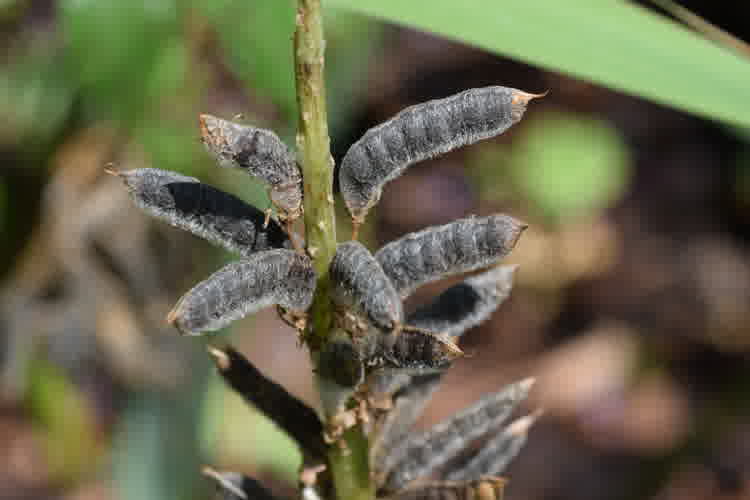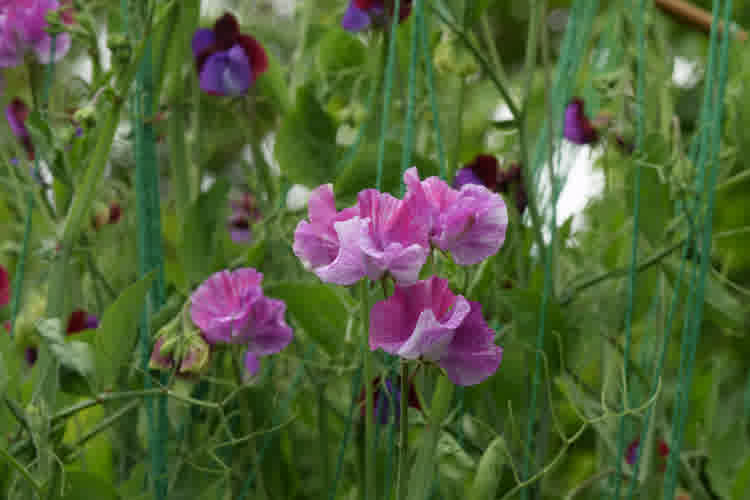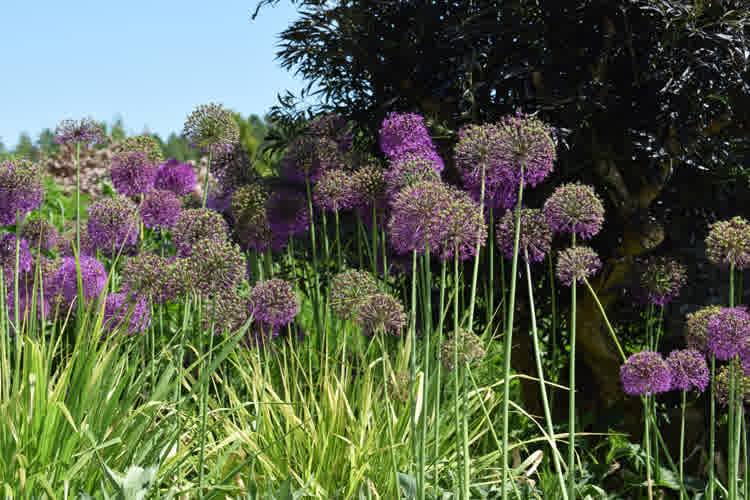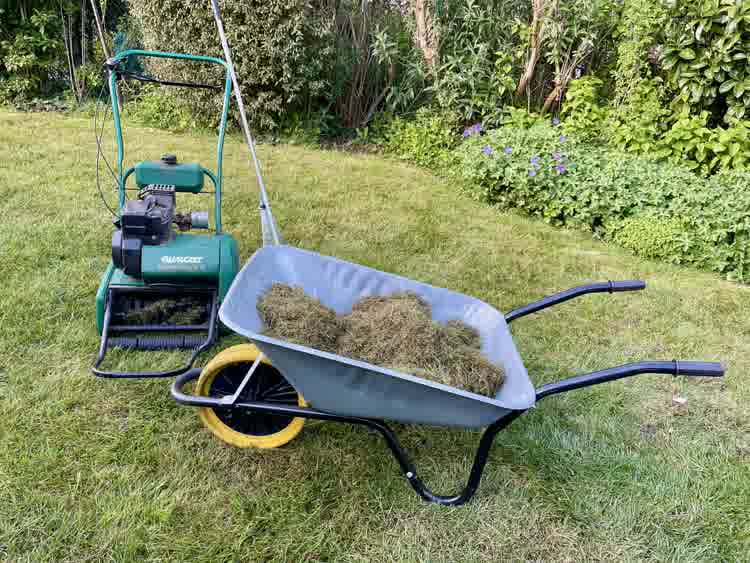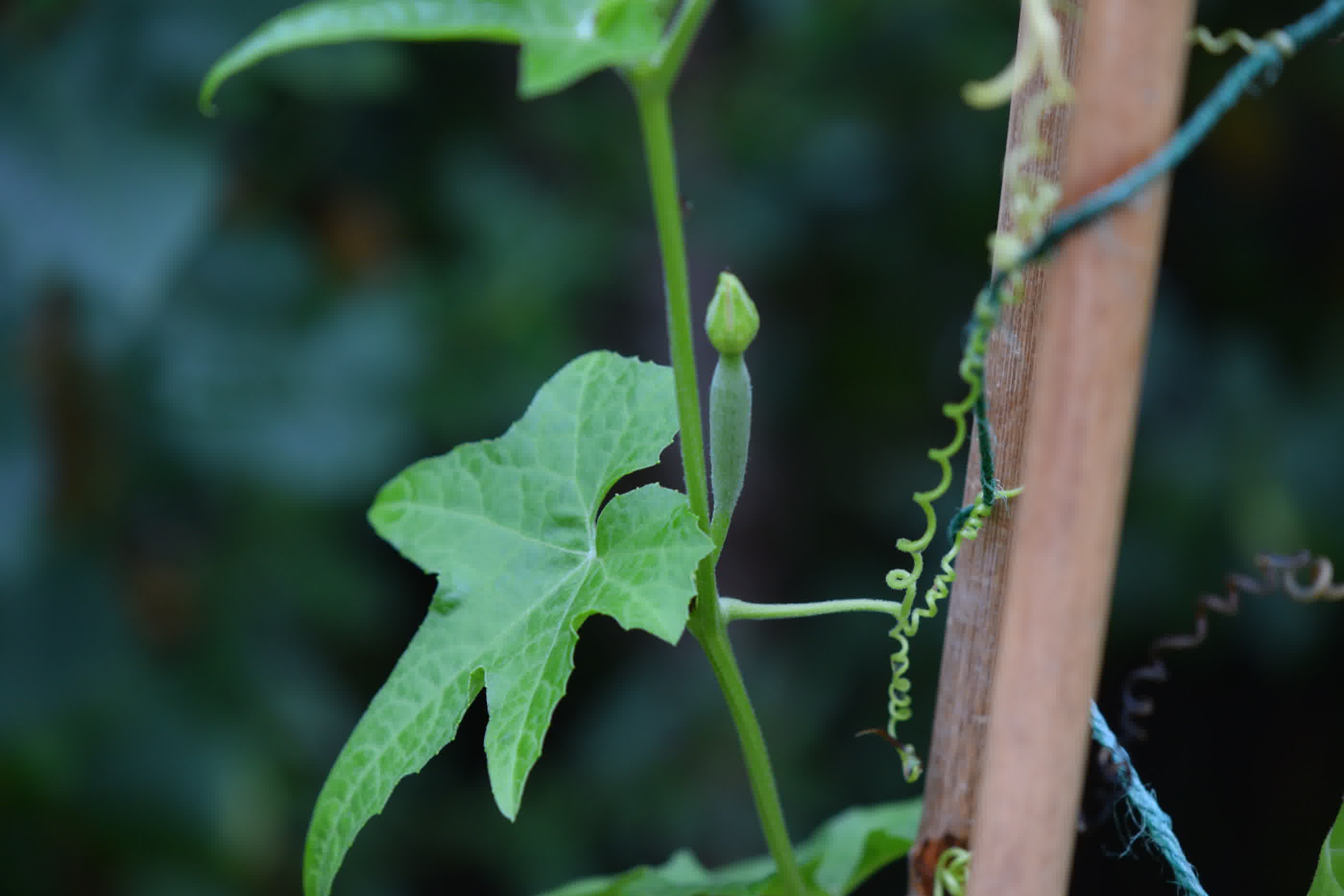
Luffa Flowers
So you've decided to grow a luffa plant. Perhaps you want to grow your own eco sponges. But did you know the luffa plant produces separate male and female flowers? In this guide, I'll describe the differences between these two flowers so you can successfully identify them and increase your chances of pollination.
Table of Contents
What is a Luffa plant?
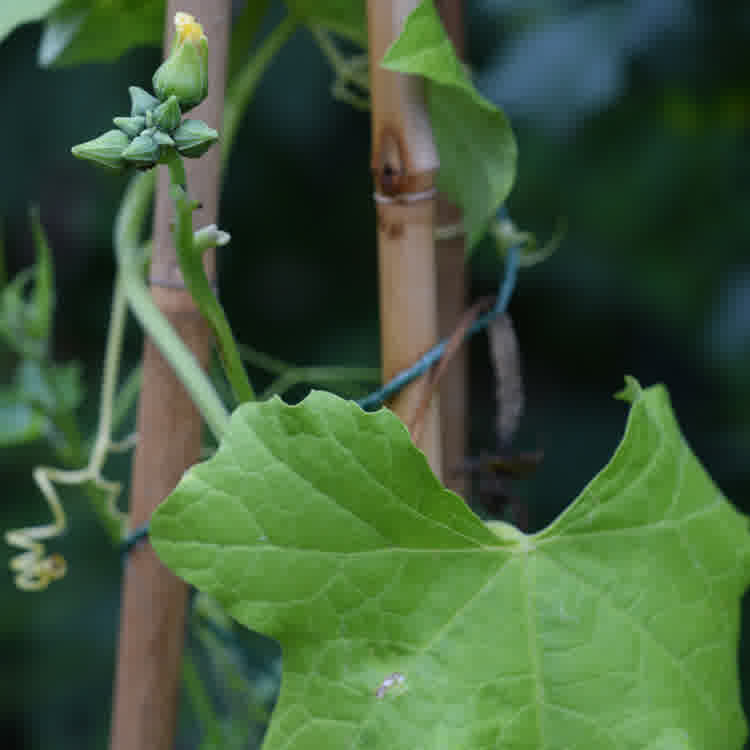
The luffa plant belongs to the Cucurbitaceae family which includes other well-known members such as pumpkins, melons, cucumbers, and gourds.
The fruit of the luffa plant, once dry, can be used as a sponge. Hence the plant is commonly known as the sponge gourd.
The luffa plant is monoecious, meaning it produces both male and female flowers on the same plant.
The female flower must be pollinated by a male flower for a luffa fruit to develop and mature.
Female Luffa Flower
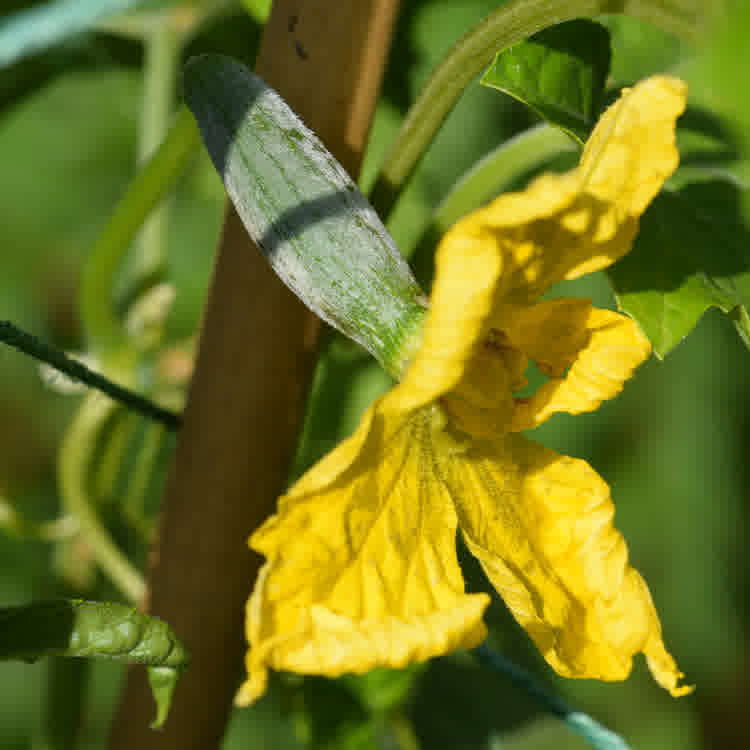
Female flowers are easy to identify because they have what appear to be a mini luffa fruit behind the petals.
The first few flowers produced by the luffa plant are usually female. A few weeks after this the plant will start to produce both male and female flowers.
A single female flower is produced on a single stem. This differs from male flowers that typically grow in clusters, as noted below. A single female flower can also grow near a cluster of male flowers. This can be seen in the third image below.
If a female flower is not pollinated it will eventually wilt away and a mature fruit will not develop from this bud.
The fruit will only go on to mature if successfully pollinated by a male flower.
Below are four images of female luffa flowers. Note the first image containing an arrow pointing to the immature fruit, which looks like a mini luffa.
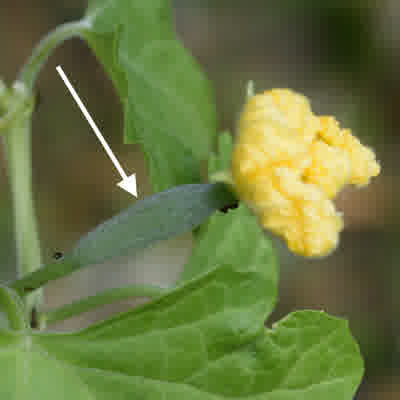
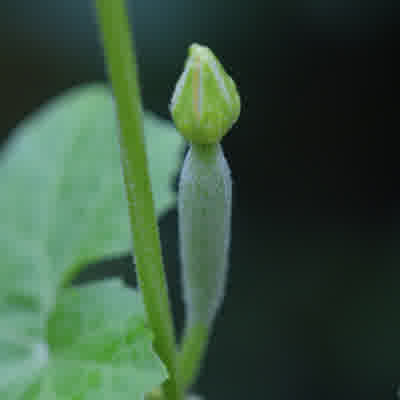
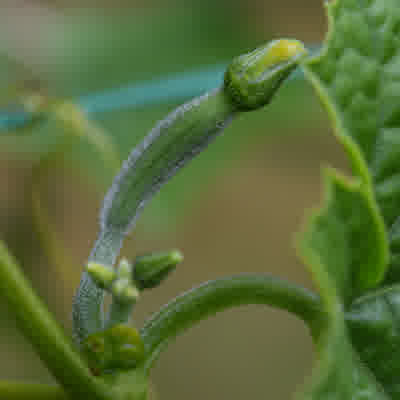
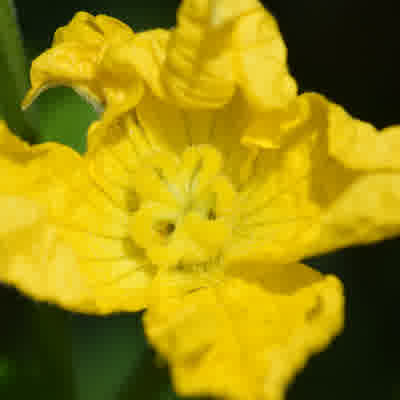
Male Luffa Flower
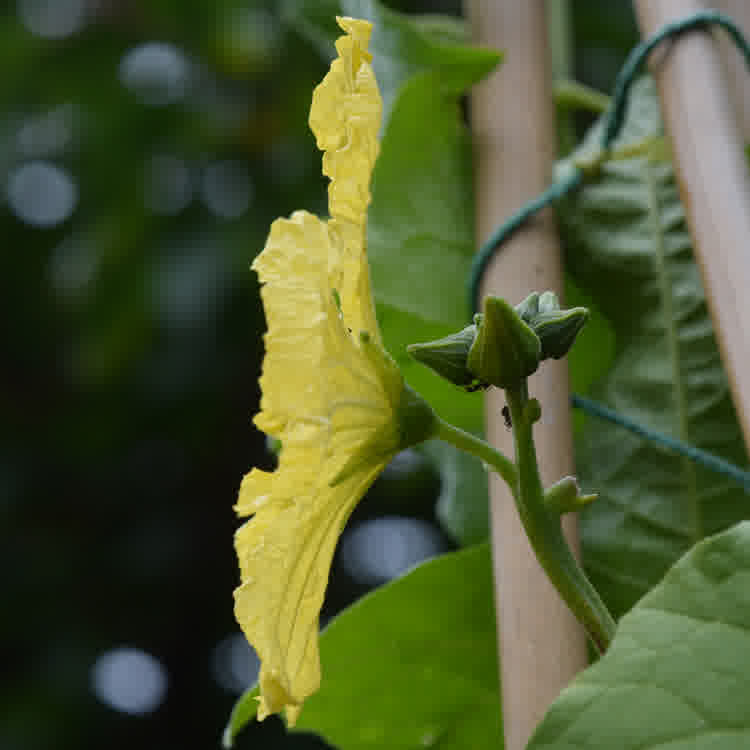
The male flowers may look similar in appearance to the female flowers but can be identified by the lack of a mini luffa shape behind them.
The male flower will be attached to the vine via a narrow stem.
Male flowers normally begin to appear a few weeks after the plant first produces female flowers.
You can collect pollen from male flowers to hand-pollinate female flowers. Using a paintbrush, brush around the male flower to collect the pollen and then brush over the female flower.
Male flowers typically grow in clusters.
Below are four images of male luffa flowers. Note the first image contains an arrow pointing to the narrow stem that attaches the flower to the vine.
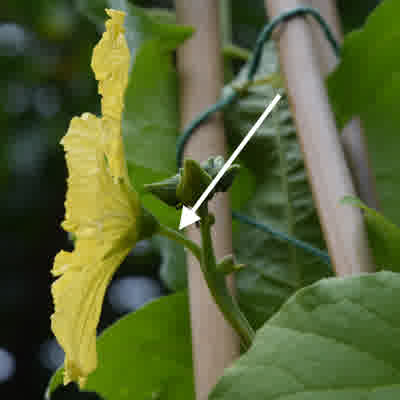
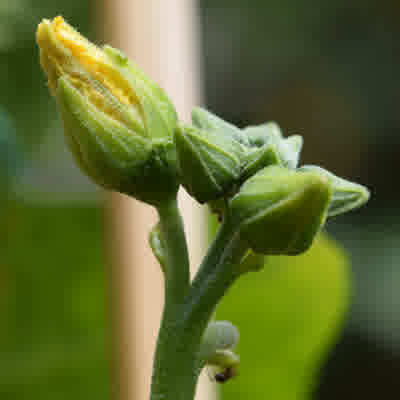
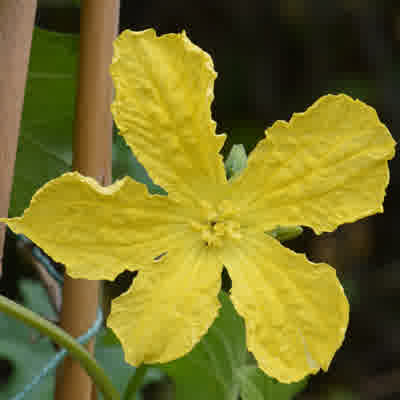
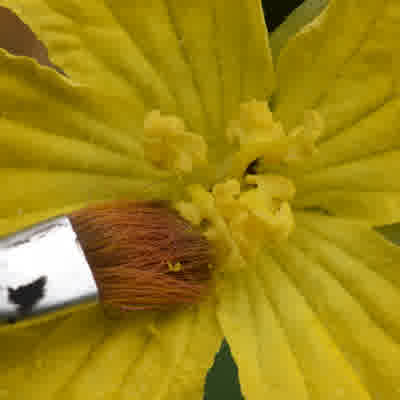
Summary
So now you know identify and tell apart the male and female flowers of the luffa plant.
Hopefully, this guide has given you what you need to successfully pollinate your flowers and be on your way to growing your own luffas!
Now all that is left, is to decide what you'll do with all those sponges.
